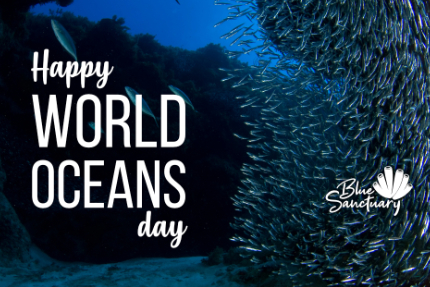These trying times of isolation and quarantine have us thinking about the bigger picture and what the future may hold. Dreams of open ocean, turquoise waters, multi colored corals, jumping tarpon, soaring osprey and healthy company are flooding our daily thoughts. When can we get back to this magical reality that Cuba holds within it’s Blue Sanctuaries?? Soon, we hope, very soon!

For now, we must rely on our imaginations to transport us to our favorite dive, the flat where we caught and released our first permit or mangrove where we snorkeled with a crocodile up close and personal! Fortunately, you are not alone in your mental adventures of these special places. There are thousands, the world over, that are in your boat; and it is thanks to all of you, present, past and future that the Blue Sanctuaries will be ready for your next visit.

We want to thank everyone that has been involved in the grand vision of fostering the protection and conservation of the marine parks of Cuba. It is through 28+ years of cooperation and continual reinvestment of resources that we are recognizing the magnificent effects of proper sustainable management in these coastal marine habitats. This cooperation through participatory experience and citizen science has not only protected over 25% of Cuba’s coastline, but it has also had immensely successful impacts on the communities that rely on these areas for their livelihoods. Instead of exploiting these areas for commercial gain, the residents are now stewards of conservation, all the while developing multi-generational improvements in skills and occupational diversity.

Over the course of the last three decades, Blue Sanctuary in coordination with non-profit organizations and a multitude of Cuban entities, have placed over 740 square miles under marine park protection. The graph below displays this growing trend of preservation of vulnerable marine habitats. The benefits of these efforts cannot be overstated in their ability to maintain biodiversity and providing refuges for endangered and important flora and fauna; while also protecting critical habitats from human impacts. This builds resilience within the ecosystems helping buffer impacts of climate change and other negative external factors.

The scope of this marine conservation initiative is absolutely massive and is unmatched in the Caribbean. Since 1992, we have been setting lofty goals in conservation and we sincerely appreciate the opportunity provided by the Cuban ministries and the support of our program participants in seeking to achieve and surpass these goals. There is still much to be done, and we will continue to progress, even in these uncertain times. What we are certain of, is that we are lucky to have each other, as working in cooperation always makes us stronger. Be safe, stay healthy, dream often; and when the day comes, we will be there welcoming you back to the Blue Sanctuaries of Cuba!

ECOSYSTEM BASED MANAGEMENT OF CORAL REEFS
The literature in the link is an exert of Chapter 12 of “The Sea: Marine Ecosystem Based Management” which is focused on coral Reefs and the interconnected habitats of mangroves and seagrass beds. Major contributors to this chapter are Jacob P Kritzer from the Environmental Defense Fund, whom Blue Sanctuary have collaborated with, and Cuban Marine Scientist Fabian Pina-Amaragos. It contains synopses of benefits, both ecological and economic, of coral reefs and the current threats to these systems worldwide. The approach to ecosystem based management is discussed including the challenges associated with the approach. Cuba is used as one of the case studies as an example of a reef system with intermediate capacity that has displayed success with MPA (marine protected area) management that is based off science. Please visit the link to learn more.
See more at: www.bluesanctuary.org



